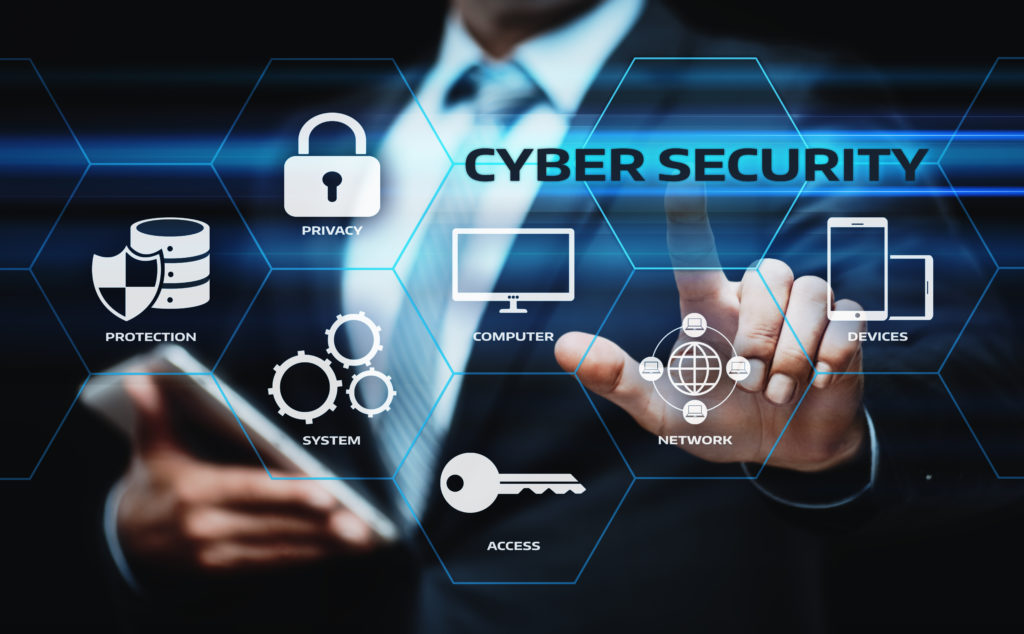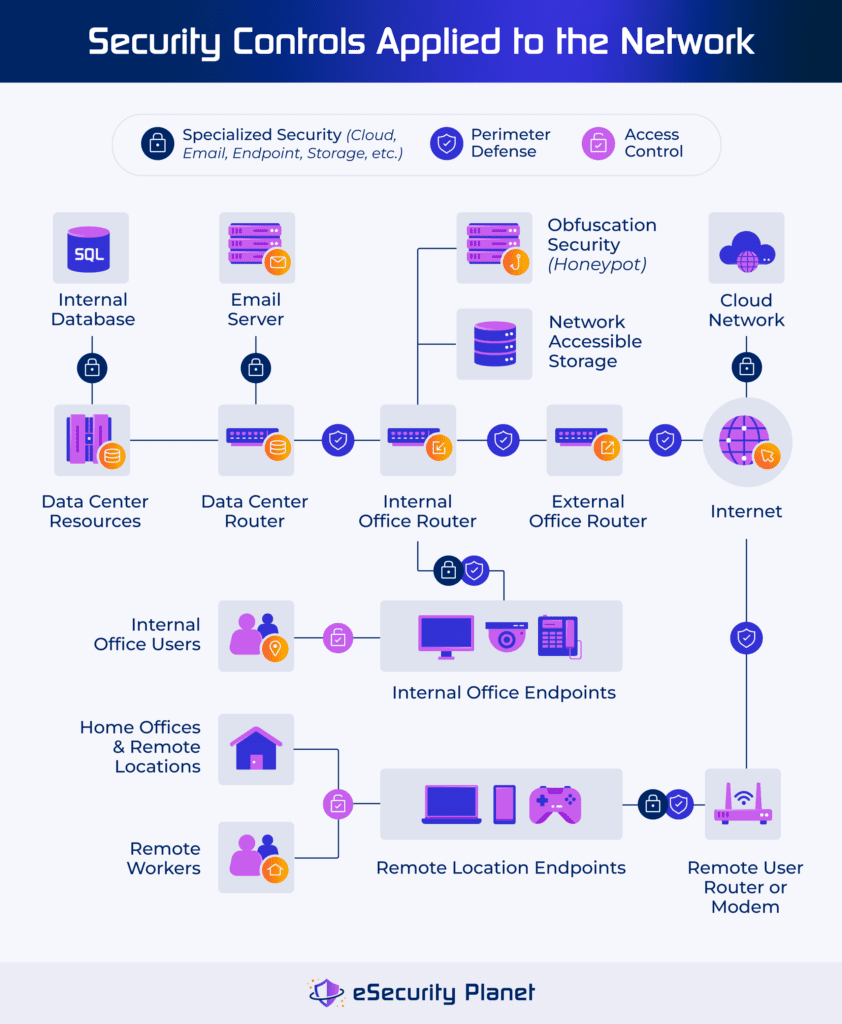Secure Your Business with Fiber Network Security Solutions Designed for the Digital Age
Secure Your Business with Fiber Network Security Solutions Designed for the Digital Age
Blog Article
Exactly How Data and Network Security Protects Versus Arising Cyber Threats
In a period noted by the fast evolution of cyber hazards, the significance of information and network safety and security has actually never ever been a lot more obvious. As these risks come to be much more intricate, understanding the interaction between data protection and network defenses is vital for minimizing risks.
Comprehending Cyber Risks

The ever-evolving nature of technology constantly introduces brand-new vulnerabilities, making it vital for stakeholders to remain attentive. Individuals might unknowingly succumb social engineering techniques, where aggressors adjust them into revealing delicate info. Organizations face distinct obstacles, as cybercriminals typically target them to manipulate valuable information or interfere with operations.
Additionally, the surge of the Web of Points (IoT) has broadened the strike surface, as interconnected devices can function as access points for assailants. Acknowledging the value of robust cybersecurity methods is critical for reducing these dangers. By cultivating a comprehensive understanding of cyber individuals, dangers and companies can carry out reliable approaches to guard their digital properties, making certain strength despite a significantly intricate threat landscape.
Key Parts of Information Protection
Making certain information safety calls for a diverse technique that encompasses various key parts. One basic component is information file encryption, which transforms delicate details right into an unreadable style, easily accessible only to authorized users with the proper decryption tricks. This acts as an essential line of defense against unapproved access.
An additional vital element is gain access to control, which regulates who can see or manipulate data. By applying strict individual authentication protocols and role-based accessibility controls, organizations can reduce the threat of expert risks and information violations.

Additionally, data masking strategies can be used to shield delicate information while still enabling its use in non-production environments, such as screening and growth. fft perimeter intrusion solutions.
Network Protection Approaches
Carrying out robust network security approaches is crucial for guarding a company's digital infrastructure. These approaches include a multi-layered strategy that consists of both software and hardware solutions made to secure the integrity, confidentiality, and schedule of information.
One essential element of network safety and security is the release of firewall programs, which act as an obstacle between trusted interior networks and untrusted external networks. Firewall programs can be hardware-based, software-based, or a combination of both, and they aid filter inbound and outgoing website traffic based upon predefined protection policies.
Additionally, invasion detection and avoidance systems (IDPS) play a vital function in keeping an eye on network web traffic for dubious activities. These systems can signal administrators to possible breaches and take activity to mitigate threats in helpful hints real-time. Regularly upgrading and covering software program is also critical, as vulnerabilities can be exploited by cybercriminals.
Additionally, applying Virtual Private Networks (VPNs) makes sure secure remote gain access to, securing information transmitted over public networks. Last but not least, segmenting networks can reduce the assault surface area and contain potential breaches, restricting their influence on the total infrastructure. By taking on these strategies, organizations can efficiently strengthen their networks versus arising cyber hazards.
Finest Practices for Organizations
Developing best techniques for companies is crucial in maintaining a strong safety and security posture. A detailed technique to information and network safety starts with routine danger evaluations to determine susceptabilities and potential threats. Organizations should implement robust accessibility controls, making certain that just accredited personnel can access sensitive data and systems. Multi-factor authentication (MFA) should be a basic requirement to enhance protection layers.
In addition, continuous staff member training and understanding programs are vital. Employees should be informed on recognizing phishing efforts, social engineering tactics, and the relevance of adhering to protection procedures. Regular updates and spot management for software program and systems are likewise important to protect versus known susceptabilities.
Organizations must create and evaluate event feedback prepares to make certain preparedness for possible breaches. This consists of developing clear communication channels and functions during a safety incident. Moreover, information encryption must be employed both at rest and in transportation to protect delicate information.
Lastly, carrying his comment is here out routine audits and compliance checks will help make certain adherence to recognized policies and pertinent laws - fft perimeter intrusion solutions. By complying with these ideal practices, organizations can substantially boost their resilience versus arising cyber risks and protect their crucial possessions
Future Trends in Cybersecurity
As companies navigate a significantly intricate electronic landscape, the future of cybersecurity is poised to evolve considerably, driven by emerging technologies and moving risk paradigms. One famous pattern is the combination of man-made knowledge (AI) and artificial intelligence (ML) into safety and security frameworks, enabling real-time threat detection and response automation. These modern technologies can assess substantial quantities of data to identify abnormalities and possible violations much more efficiently than traditional approaches.
An additional important pattern is the increase of zero-trust architecture, which calls for continual verification of user identifications and gadget protection, despite their place. This approach decreases the threat of insider threats and boosts security against external assaults.
Moreover, the enhancing fostering of cloud solutions necessitates durable cloud safety strategies that attend to distinct susceptabilities connected with cloud environments. As remote job becomes an irreversible fixture, safeguarding endpoints will likewise become extremely important, resulting in a raised concentrate on endpoint discovery and reaction (EDR) remedies.
Lastly, regulative conformity will remain to shape cybersecurity methods, pressing organizations to take on more strict data defense steps. Welcoming these trends will be essential for companies to strengthen their defenses and navigate the evolving landscape of cyber risks successfully.
Final Thought
In conclusion, the implementation of durable information and network safety steps is important for organizations to protect versus emerging cyber hazards. By utilizing security, gain access to control, and efficient network security strategies, organizations can dramatically minimize vulnerabilities and protect delicate info.
In an era noted by the rapid advancement of cyber hazards, the value of data and network content protection has never been a lot more pronounced. As these dangers become more complicated, understanding the interaction between information security and network defenses is necessary for reducing threats. Cyber risks incorporate a broad array of harmful tasks aimed at endangering the confidentiality, stability, and availability of networks and data. An extensive approach to information and network protection begins with normal risk evaluations to recognize vulnerabilities and prospective hazards.In conclusion, the application of durable data and network safety actions is important for companies to guard against emerging cyber dangers.
Report this page